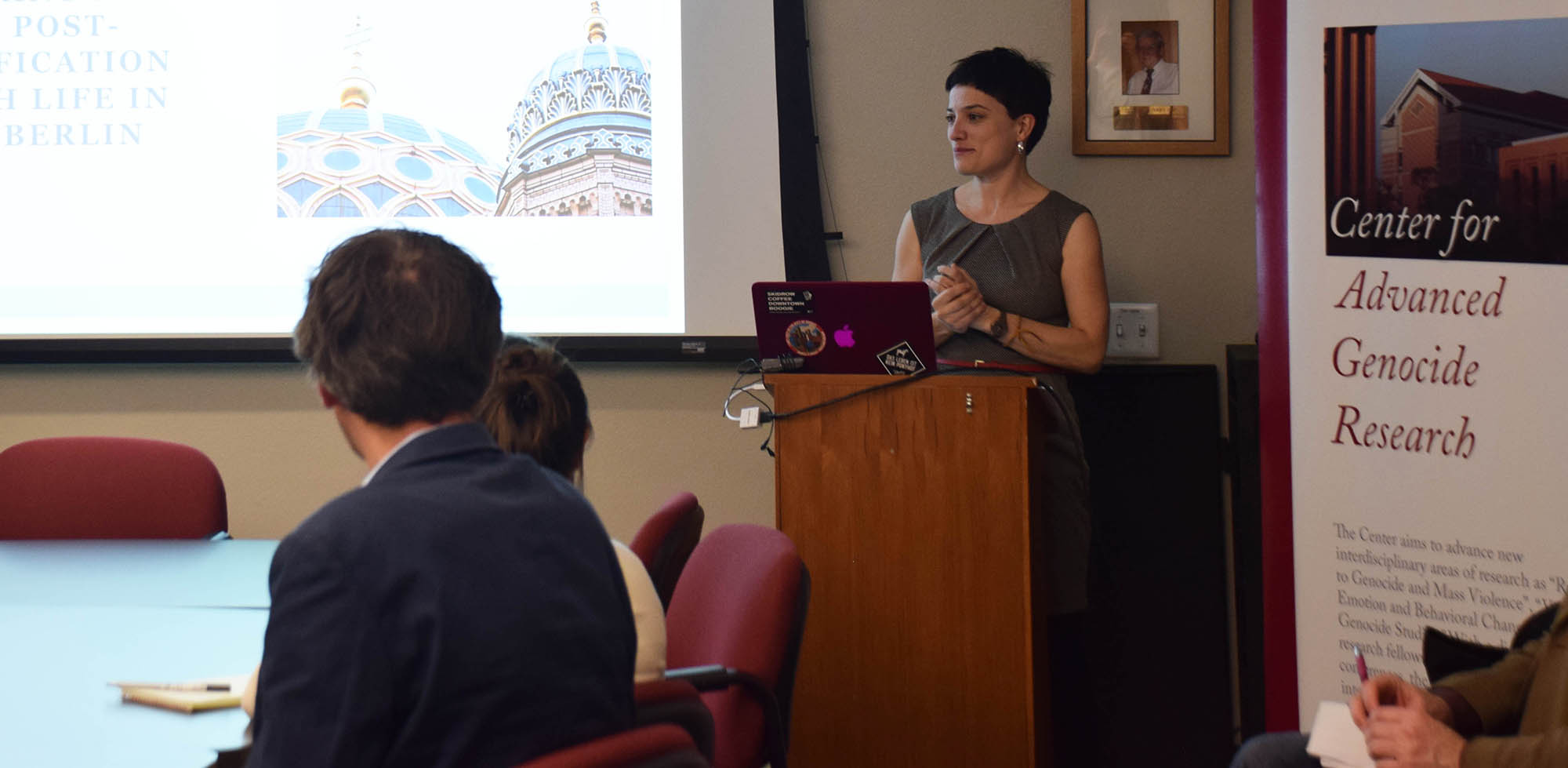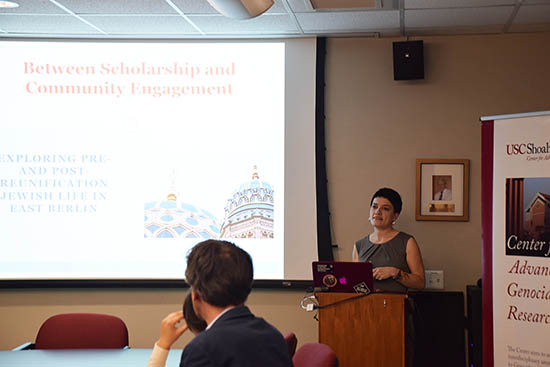Greenberg Fellow Researches Post-War Jewish Life in East Germany


Katja Schatte, USC Shoah Foundation Center for Advanced Genocide Research’s 2016-17 Greenberg Research Fellow, shared some of the discoveries she’s made in the Visual History Archive at her public lecture on March 7.
A PhD candidate in history at the University of Washington and a native of Dresden, Germany, Schatte is working on a multidisciplinary study of Jewish life in East Germany in from pre-reunification in the 1970s and ‘80s, and after the fall of the Berlin Wall. She is also interested in the “transgenerational memory” of Jews who lived in East Germany, particularly Berlin, from the immediate aftermath of the Holocaust to the present day.
She has found 70 testimonies in the Visual History Archive of Holocaust survivors who discuss life in East Germany, and is comparing these testimonies with interviews Schatte has conducted herself as well as interviews in other archives.
In her lecture “Between Scholarship and Community Engagement: Exploring Pre- and Post-Reunification Jewish Life in East Berlin,” Schatte explained that she is interested in how German Jews’ attitudes toward their Jewish identity and community in East Berlin were shaped by their experiences, gender, profession, family history and other factors.
The experiences of Holocaust survivors and their children in East Germany in the period between World War II and reunification is not well-documented, she said. While official records were kept of the Jewish population of East Berlin, not all Jews identified themselves officially as such and had varying degrees of interest and participation in the Jewish community.
“My goal is to provide a missing puzzle piece in post-war German Jewish history,” Schatte said.
She showed two testimony clips she discovered in the Visual History Archive that highlight points of interest in her research. One was of Sophie Marum, who said that after the war, all the contributions Jews had made to German society seemed to be shrugged off and forgotten. This echoes a sense of apathy expressed by many survivors; that all their work and beliefs had been for nothing and didn’t matter.
Surprisingly, Schatte said that through the interviews she has conducted herself of second- and third-generation survivors, she has found that German survivors seem to become more invested in their community and Jewish roots later in life. While a survivor may not have practiced Judaism or celebrated customs and holidays at home as their children were growing up, he or she may take more of an interest in recent years, as a way to deal with current events, perhaps.
Schatte also noted that her starting point for her research is female experiences, as a way to offer a voice to women whose viewpoints are often sidelined. To illustrate how important it is to encourage women to talk about themselves, she showed a clip from survivor Alice Zadek that demonstrates a common phenomenon she’s encountered. In the clip, Alice begins answering a question about her life after the war by talking about what her husband did. The interviewer gently reminds her that they are there to talk about her, not her husband.
Schatte’s approach is “a way of creating a balance by taking women as the starting point,” she said.
The lecture also included discussion of two of the major Jewish community groups in the post-war period: the Jewish Cultural Association and We for Us. Each group provided East German Jews a place to socialize, organize, and advocate for themselves, though their approaches were slightly different. Schatte actually showed an advertisement printed in the We for Us newsletter in the 1990s encouraging Holocaust survivors to get in touch with the Survivors of the Shoah Visual History Foundation (later USC Shoah Foundation) to record their testimony.